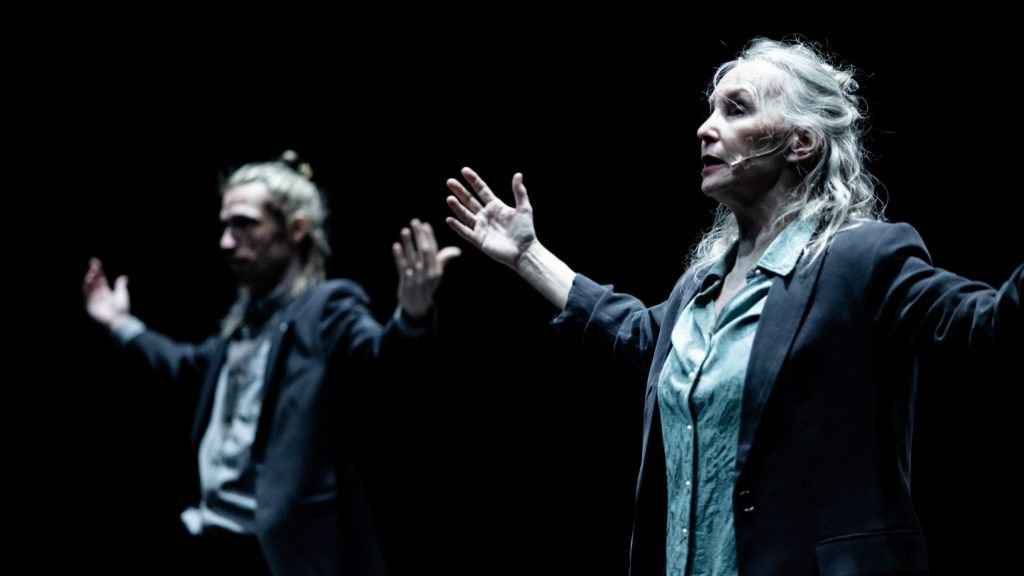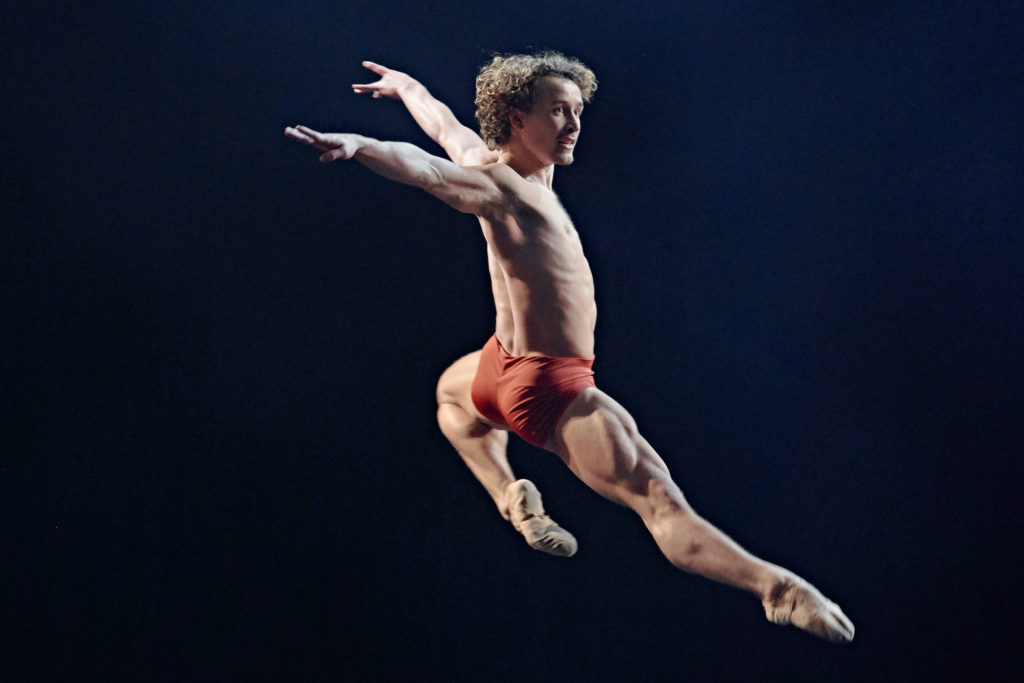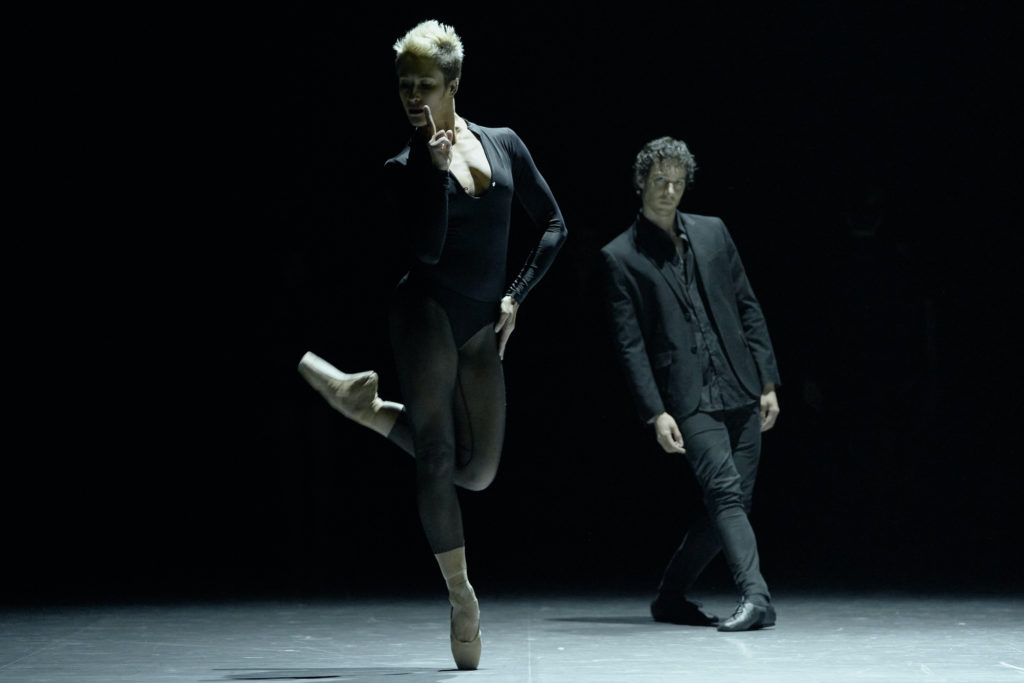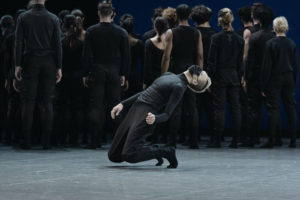Montreal dance, however restricted, returns - Vancouver Ballet Society
- Home
- City Reports 2020 - 2023
- Montreal dance, however restricted, returns

By Victor Swoboda
Masks. Hand cleanser. Early curtain. Ushered entry and exit. Limited audiences. Such was the scene when live-dance performances cautiously returned to Montreal theatres in late March, 2021, after a 12-month absence because of the COVID-19 lockdown.

During the lockdown, Montreal’s dancemakers toiled on virtual platforms. The oldest, largest companies, Les Grands Ballets Canadiens and BJM_Danse, offered online performances from their filmed repertoire. For one week in March, 2021, the MAI (Montréal arts interculturels) offered a webcast of works by Jérémy Galdéano, Věra Kvarčáková, Diana Léon and Paco Ziel. Laudable as these and other virtual efforts were, their impact could not match that of live dance.
Montreal also saw changes affecting long-time local mainstays. David Rancourt, a well-known Montreal dancer, took up the reins of PPS Danse following the death on January 31 of choreographer Pierre-Paul Savoie, who founded the company in 1989. Savoie was also active promoting better working conditions for the dance world, serving as president of the group representing Quebec dance, Regroupement Québecois de la danse. Louis Robitaille, artistic director of BJM_Danse (Les Ballets Jazz de Montréal) since 1998, stepped down, with his successor — Alexandra Damiani — set to begin her tenure at the 50-year-old company in June. Iconoclast Benoît Lachambre left Par B.L.eux, the company he founded in 1996, because his role as director, he wrote to me from Mexico, “forced me into surrendering to operative rules [which] my art devotions could no longer compromise with.”
Then, at last, the theatres re-opened.

Face-à-Face, created and directed by Jérémie Niel, with performers Louise Bédard and Félix-Antoine Boutin, unfolded before a limited audience of 30, which seemed sparse even in La Chapelle’s small theatre. In masks and sitting at a distance from each other, everyone likely felt as self-conscious as I did, though pleased to be watching live dance again.
Speaking to each other like two friends on the street, Bédard and Boutin broke down theatre’s fourth wall, toying with notions of how identity, behaviour and conventions both help and hinder communication and intimacy. Their extended verbal banter sometimes sounded spontaneous, sometimes rehearsed — a reflection of people’s private and public behaviour. In a more animated section, Bédard, a noted choreographer, taught actor/theatre director Boutin a dance routine she had learned from another choreographer. The hand gestures, she said, were inspired by a Velásquez painting. The walk came from singer Dalida. Hapless Boutin imitated her in vain and eventually lay on the floor, entangled in his own limbs, one of those people who struggle with outside influences and discipline. Later, free of constraints, he pranced like a horse. The two finished by expressing paeans to each other, a “feel-good” ending that in dramatic terms seemed forced despite the pair’s obvious sincerity. Their contrasting personalities — she, sober; he, giggly — helped to anchor a work that kept searching to find its mooring.
Punch Line, an hour-long solo by the personable dancer/choreographer Jacques Poulin-Denis was scheduled at Agora de la danse last October but postponed to April. Speaking through a microphone, Poulin-Denis opened with an extended monologue that touched on biographical details like a childhood bike accident and his desire to do stand up comedy. Further layers of his identity were subsequently peeled away. The mood turned unstintingly real when he removed the prosthetic leg he has used since a serious car accident many years ago threatened to end his fledgling dance career. “It’s always present in my mind, though I try to make jokes to forget about it,” he confessed. Over the years, Poulin-Denis danced so fluidly that he succeeded in making audiences largely ignore the artificial limb hidden under his clothing. In Punch Line, he did away with the illusion. Wearing a prosthetic peg visible to all, he twirled on it in a routine that revealed both his joy of movement and his unadorned self. One person, many personalities — the contrast was as striking as the clash between his conservative white jacket and flamboyantly sparkly shirt.

Les Grands Ballets Canadiens launched a five-performance return to live theatre in April with an ambitious 90-minute program at Place des Arts. A limited audience of 250 made a sparse showing in large Théâtre Maisonneuve. Many of the eight pieces (all to recorded music) that artistic director Ivan Cavallari programmed showed his predilection for classical ballet aesthetics — pretty port de bras, jumps, extensions, lifts.
Group coordination was shaky in the opener, Jorge García’s Majísimo, a 14-minute Spanish-themed piece of classical ballet pastiche for four couples. Regardless, the predictable choreography was devoid of wit or invention. Asaf Messerer’s Spring Waters lacked some of the virtuoso stunts that make this 1950s Soviet warhorse duet still watchable, though, partnered by Graeme Furhman, Myriam Simon sparkled. Anna Ishii and charismatic Célestin Boutin brought a degree of excited tension that brightly lit Peter Quanz’s splendid, popular lyrical duet, Blushing.

Hélène Blackburn, a distinct choreographic voice in her own right, imitated the style of Édouard Lock in a 10-minute group piece, Fête Sauvage, volume 1. Women in sheer black tights, men in black jackets, shadowy lighting, flaying arms, pop music — all seemed very Lock (who left Montreal in 2015 for a freelance career). It was cool, in a retro way, but begged the question, why imitate?
Roddy Doble and Yui Sugawara cleanly danced a duet from Sleeping Beauty in Marcia Haydée’s traditional staging, a preview of the ballet scheduled for the 2022 season. A full-length classical ballet at Les Grands — now that’s something!
And the 17-day Festival TransAmériques returns starting May 26, with 23 dance and theatre shows in indoor, outdoor and virtual settings. Montreal dance, however restricted, is back.

